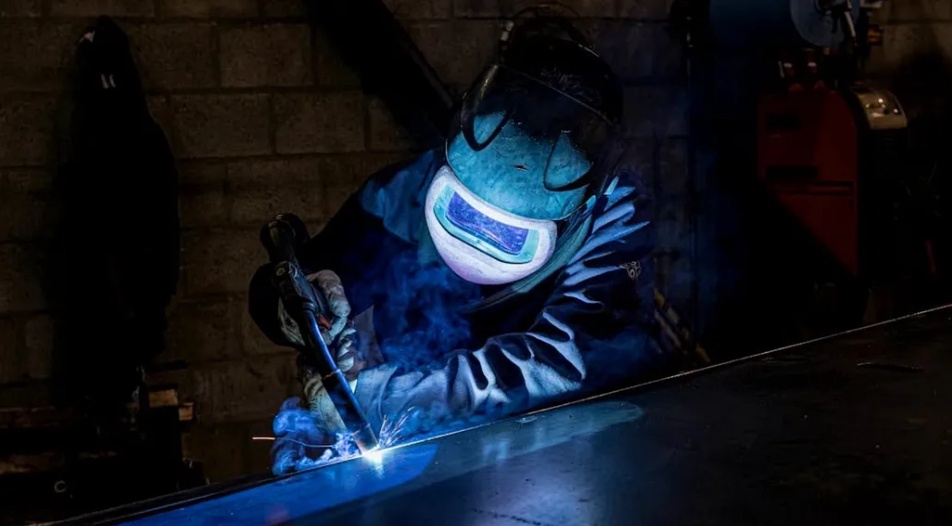TIG welders, also known as tungsten inert gas (TIG) welders, are known for their precision and clean welds. But what if you could take your TIG welding game to the next level? Enter pulse welding technology. This innovative feature adds a whole new dimension to TIG welding, offering significant advantages for both experienced welders and beginners.
What is pulse welding?
Pulse welding isn't a separate welding process but rather an advanced technique used with TIG welders. It works by modulating the welding current, creating a pulsating effect. This means the current alternates between a high peak current and a lower background current, with the frequency and duration of each pulse carefully controlled.
How does pulse welding work?
The magic of pulse welding lies in its ability to precisely manage heat input. Here's a breakdown of the key aspects:
- Peak Current: This high-intensity burst of current melts the base metal, creating deeper penetration and a stronger weld.
- Background Current: This lower current maintains a molten pool and prevents excessive heat buildup, minimizing the risk of burn-through and warping.
Think of it like this: the peak current acts like a powerful hammer, driving the weld deeper, while the background current acts like a steady hand, controlling the molten metal and preventing splatter.
Benefits of Pulse Welding with TIG Welder Machines
So, how exactly does pulse welding enhance the performance of TIG welders? Here's a closer look at the key advantages:
- Reduced Heat Input: The pulsating nature of the current significantly reduces the overall heat transferred to the workpiece. This is a major benefit for thin materials and heat-sensitive applications like stainless steel and aluminum. With traditional TIG welding, there's a higher risk of warping or melting through these delicate materials. Pulse welding allows for a cooler weld pool, resulting in cleaner and more precise welds.
- Superior Control: The fine-tuned heat control offered by pulse welding translates into exceptional control over the weld pool. This makes it ideal for out-of-position welding, where maintaining a stable weld pool can be challenging. Pulse welding allows for better control of the molten metal, even when welding on vertical or overhead surfaces.
- Improved Weld Appearance: Pulse welding minimizes spatter, those pesky droplets of molten metal that can mar the weld aesthetics. Additionally, the controlled heat input reduces the risk of porosity (tiny gas bubbles trapped in the weld) and improves overall weld bead consistency. The result? Cleaner, more aesthetically pleasing welds that require less post-weld cleaning.
- Increased Efficiency: Pulse welding can actually improve your welding speed. The controlled heat input allows you to travel faster without compromising weld quality. Additionally, the reduced spatter means less time spent cleaning the weld after each pass. This translates into increased productivity and reduced overall welding time.
- Versatility: Pulse welding opens doors to working with a wider range of materials. From thin sheet metal to thicker sections, pulse welding offers the control and precision needed to achieve high-quality welds on various materials.
Is pulse welding right for you?
While pulse welding offers numerous benefits, it's not necessarily a one-size-fits-all solution. Here are some factors to consider:
- Material Thickness: Pulse welding shines when working with thin materials or heat-sensitive applications. For thicker materials, traditional TIG welding might be sufficient.
- Skill Level: Pulse welding offers greater control, which can be helpful for beginners. However, experienced welders can still benefit from the improved weld quality and efficiency it provides.
- Budget: TIG welders with pulse capabilities tend to be more expensive than those without. Consider your budget and welding needs before making a purchase.
FAQ
Do I need a special TIG torch for pulse welding?
No, most standard TIG torches can be used with pulse welding. However, some manufacturers offer torches specifically designed for pulse welding, which may offer additional features or benefits.
How do I set up my TIG welder for pulse welding?
The specific settings will vary depending on your TIG welder model. Consult your machine's manual for detailed instructions on setting up pulse welding parameters like pulse frequency, peak current, and background current.
Can I use pulse welding with DC or AC TIG?
Pulse welding can be used with both DC and AC TIG welding. DC pulse welding is ideal for welding steel and stainless steel, while AC pulse welding is well-suited for aluminum and magnesium.
In conclusion, pulse welding technology is a significant advancement in the world of TIG welding. By offering superior heat control, improved weld quality, and increased efficiency, pulse welding allows welders of all skill levels to achieve exceptional results.


No comments yet